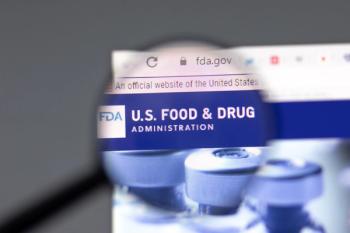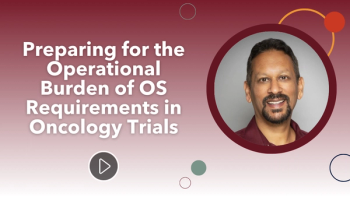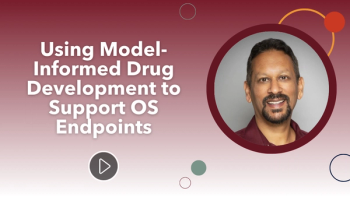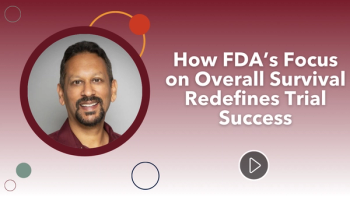
- Applied Clinical Trials-01-01-2006
- Volume 0
- Issue 0
Two-Timing on Today's Vaccines?
New paper from the European Medicines Agency explores future vaccine guideline.
Timing is everything in effective medical care—and the European Medicines Agency certainly got close to capturing the moment with its latest draft clinical guidance. As the world's population, trembling at the prospect of imminent extinction in an avian flu pandemic, developed a sudden and passionate interest in prophylaxis, the agency released a concept paper that appeared to respond to popular concerns, with a focus on vaccines.
Peter O'Donnell
Closer inspection revealed that the agency was not providing an instant solution to potential obliteration of the human race. More prosaically, it was offering a concept paper for a guideline on the conduct of pharmacovigilance for vaccines. Not quite so sexy. But although the world may have shrugged its shoulders dismissively and shifted its frantic search for salvation elsewhere, the document is worth a glance for those with a more mature grasp of what is at stake in the clinical aspects of medical care.
The paper proposes the development of a guideline on the conduct of pharmacovigilance for vaccines used by all age groups for prophylaxis against infectious diseases. It covers the steps in the pharmacovigilance process, types of vaccines, different target populations, and different stakeholders, with particular emphasis on small children, a major population group that routinely receives vaccines.
Call for Comment
The starting point is that prophylactic vaccines are different from most other medicines in that they are generally administered to wide and healthy populations, so naturally a very high standard of safety is to be expected. Consequently, pharmacovigilance merits particular attention, not least in respect of assessing whether any aspects of the system need to be enhanced to ensure adequate protection of public health.
As the concept paper notes (irrespective of the current popular panic over avian flu), vaccine safety issues have been discussed increasingly in the public arena. In an implicit reference to heavy media coverage of suggestions that infants have suffered serious side effects from some routine vaccinations, it comments coyly on "some safety signals" that have raised serious public concerns, reducing trust and acceptance of vaccines—with an impact on the effectiveness of vaccination programs.
So the guideline will focus on methods and tools to investigate the tolerability and safety of vaccines. Since any safety concern over a vaccine concerns a high number of subjects, safety concerns need to be quickly evaluated. And although vaccination programs differ between member states, the same vaccines are authorized and sold across the EU, so a problem arising with a vaccine in one member state might have impact on the safety of the same or similar vaccines in all other countries.
In addition, as immunization now becomes universal, surveillance should also be universal, the concept paper argues. For new vaccines now in development or clinical testing—such as antimalaria, anti-HIV, or for prophylaxis of cervical cancer, and which are expected to deliver large benefits for public health—benefit–risk evaluations have to consider safety and efficacy aspects for the individual vaccines and for public health. So the guideline will underline that validated, robust and widely accepted methods are needed for vaccine safety surveillance.
Narrow therapeutic margin
Given the limited immediate individual health benefit from most vaccines, adverse reactions are understandably considered less acceptable, especially if the incidence of the infectious disease in the target population is low or is reduced as a result of a successful vaccination campaign.
This narrow therapeutic margin makes it necessary, suggests the agency's paper, to conduct intensive investigation of even rare suspected adverse reactions. There is a need for clear case definitions of adverse reactions following use of vaccines for proper case ascertainment and assessment, and for long-term follow-up for delayed adverse reactions in a postmarketing setting. Similarly, a new approach may be needed to deal with nonserious adverse reactions if these impact on the acceptability of a vaccine and translate into a low coverage rate.
Other areas identified as requiring closer study include the age-relatedness of adverse reactions, methods to assess causal association of serious and rare adverse reactions, special risks for infection of others associated with the administration of live attenuated vaccines, batch-relatedness of adverse reactions—in light of variations in the manufacturing process between batches—and proper postmarketing investigation and assessment of changes in the manufacturing process which, even if small, may have implications on the safety profile of a vaccine.
Wide scope
The concept paper envisages taking account of the role of a wide range of stakeholders, ranging from competent authorities to those who receive vaccination (and in the case of children, their parents), to health authorities responsible for vaccination programs and batch release and authorities evaluating epidemiology of vaccine-preventable infectious diseases. Equally, the respective roles will be considered of healthcare professionals, manufacturers, the World Health Organization, and the media.
It will address safety aspects in different target groups, such as infants with a developing immune system, immuno-compromised patients, and elderly patients. And it will assess the safety considerations of different types of vaccines—including vaccines based on new concepts and new technologies or delivery systems—as well as the special safety aspects of stabilizers, preservatives, adjuvants, and other residual material in the final product.
The likely changes
Although this is only a draft suggestion at this stage, the agency clearly has some firm ideas on what the final shape of its guideline will look like. Already EU rules for medicines authorization regard pharmacovigilance planning as an essential element of an application, with risk management plans as a standard procedure where merited. But the concept paper also envisages special postauthorization pharmacovigilance considerations, linked to the different characteristics of each vaccine, whether it is new or well-established.
It suggests manufacturers and authorities should develop predefined check lists or formats for postauthorization reports of adverse reactions that can be anticipated from experience with comparable vaccines. "This is essential to ascertain relevant clinical information in a consistent way in order to ensure the high quality of the causality assessment of an individual case," the concept paper urges.
Similarly, the appropriate case ascertainment is crucial for a valid spontaneous reporting system. Adequate follow-up of serious spontaneous adverse reaction reports should be guaranteed, and the importance of causality assessment on established criteria will be stressed. Adverse events following immunization should be considered under the headings of "vaccine-induced," due to the intrinsic characteristics of the vaccine preparation and the individual response, and "vaccine-precipitated," triggered by administration of a vaccine but which may also have occurred later or in other circumstances.
Postmarketing safety studies should investigate adverse reactions or risks that are not identified or fully characterized prior to authorization, such as rare but serious adverse reactions, reactions with delayed onset, and reactions in subpopulations.
And the overall impact of postauthorization surveillance should provide reliable estimates of the incidence of adverse reactions in the target population, the causal relationship between vaccine and adverse event, and risk factors predisposing to specific adverse events. The guideline would present specific advice and considerations for when and how specific studies should be conducted.
Industry urgency
Meanwhile—and unsurprisingly—the European vaccine industry has been maximizing the opportunity that avian flu has provided, and showcasing its merits and its key messages. The European Vaccine Manufacturers (EVM) issued a statement in late 2005 on human influenza pandemic vaccines outlining their view of the current situation and the future prospects.
In the event of a pandemic, vaccines will be the best specific way to control the disease, and will be needed as soon as possible and in very large quantities, it pointed out boldly. And, it claimed, somewhat stridently, it has been "actively involved in addressing this public health challenge"—notably with an action plan it proposed in February 2004, which urged a long-term commitment between the industry and the European and national authorities to make sure answers were available before the threat becomes a problem.
Some positive progress has been achieved, the statement records. The European Medicines Agency has instituted an accelerated procedure for the development of prototype pandemic influenza vaccines. Manufacturers are engaged in the development of prototype pandemic vaccines, upgrading facilities to produce clinical batches, and conducting trials of specific monovalent formulations that could be available within a year. And talks are underway on the creation of a public–private partnership to push development and to promote increased interpandemic influenza vaccination uptake.
Outstanding challenges
But significant challenges still need to be overcome, says the EVM.
In particular, the current 20% level of vaccination of the European population "is not adequate to secure sufficient quantities of vaccines in a pandemic situation," and additional investments are needed to increase coverage rates and production capacity.
Europe remains far behind the policies developed by the United States, Canada, Australia, and Japan to support the development of pandemic vaccines through contractual arrangements with manufacturers for vaccine formulations and increased manufacturing capacity. Financial support from public health authorities is needed to boost industry research and development both in the short and long term. And not enough EU member states have reached the national advance purchase agreements with manufacturers that are necessary preconditions to the lengthy process of increasing production capacity. Nor has adequate provision been made by the authorities on major questions ranging from supplies of raw materials to liability or to allocation of stocks in the event of an emergency.
Peter O'Donnell is a freelance journalist who specializes in European health affairs and is based in Brussels, Belgium.
Articles in this issue
almost 20 years ago
A Proposed Clinical Trial Model: Analyzing the CT Processalmost 20 years ago
India: Have We Made Progress?almost 20 years ago
eShowcasealmost 20 years ago
The Imperative to Support Site Adoption of EDCalmost 20 years ago
Clinical Inspections, IRBs Face Overhaulalmost 20 years ago
The Globalization of Clinical Trialsalmost 20 years ago
Good Regulatory Practices: Another Set of "Things to Do"?almost 20 years ago
Trial Organizers Must Involve More Older People in ResearchNewsletter
Stay current in clinical research with Applied Clinical Trials, providing expert insights, regulatory updates, and practical strategies for successful clinical trial design and execution.






.png)



.png)



.png)
.png)
